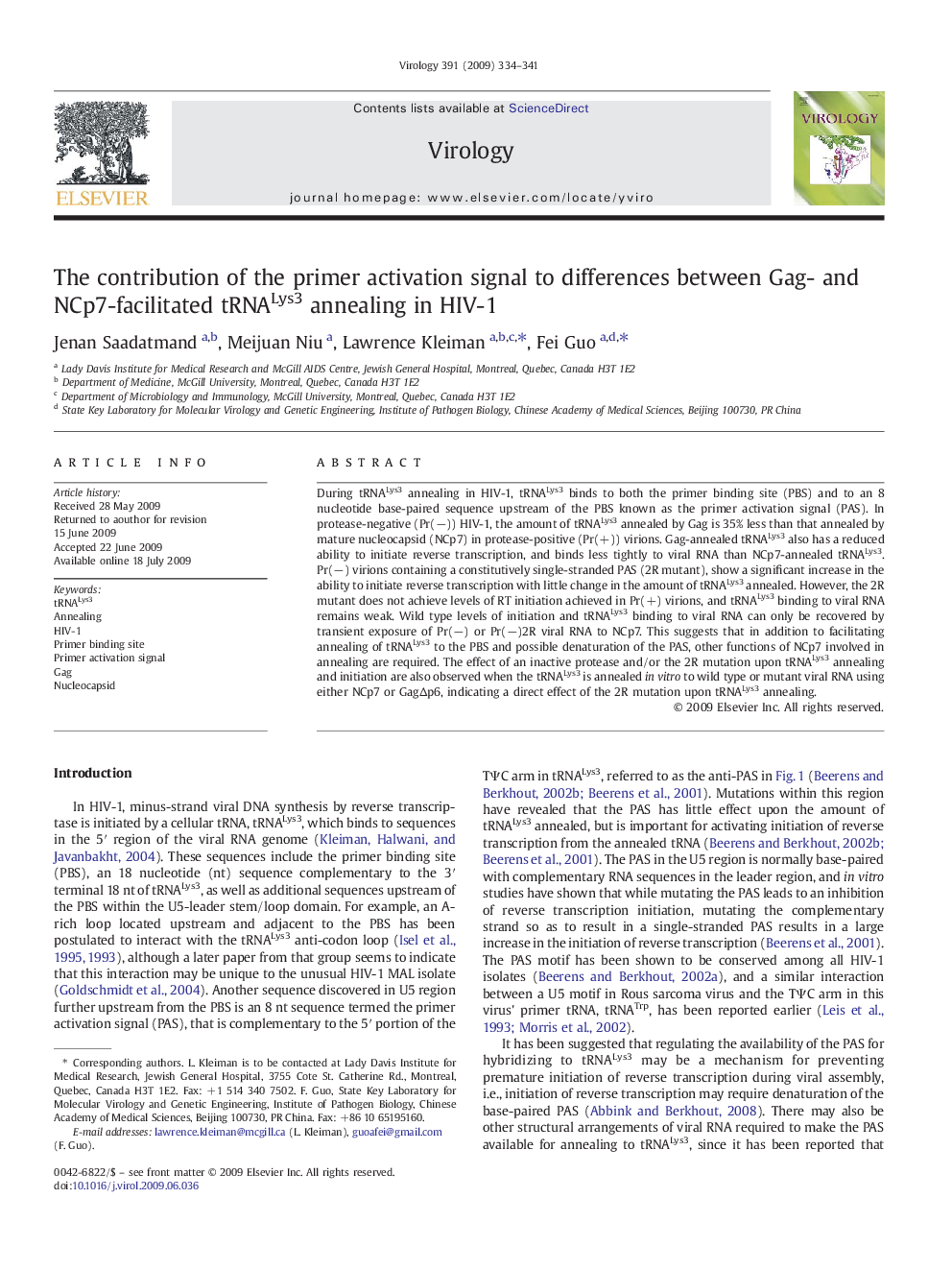| Article ID | Journal | Published Year | Pages | File Type |
|---|---|---|---|---|
| 3425257 | Virology | 2009 | 8 Pages |
During tRNALys3 annealing in HIV-1, tRNALys3 binds to both the primer binding site (PBS) and to an 8 nucleotide base-paired sequence upstream of the PBS known as the primer activation signal (PAS). In protease-negative (Pr(−)) HIV-1, the amount of tRNALys3 annealed by Gag is 35% less than that annealed by mature nucleocapsid (NCp7) in protease-positive (Pr(+)) virions. Gag-annealed tRNALys3 also has a reduced ability to initiate reverse transcription, and binds less tightly to viral RNA than NCp7-annealed tRNALys3. Pr(−) virions containing a constitutively single-stranded PAS (2R mutant), show a significant increase in the ability to initiate reverse transcription with little change in the amount of tRNALys3 annealed. However, the 2R mutant does not achieve levels of RT initiation achieved in Pr(+) virions, and tRNALys3 binding to viral RNA remains weak. Wild type levels of initiation and tRNALys3 binding to viral RNA can only be recovered by transient exposure of Pr(−) or Pr(−)2R viral RNA to NCp7. This suggests that in addition to facilitating annealing of tRNALys3 to the PBS and possible denaturation of the PAS, other functions of NCp7 involved in annealing are required. The effect of an inactive protease and/or the 2R mutation upon tRNALys3 annealing and initiation are also observed when the tRNALys3 is annealed in vitro to wild type or mutant viral RNA using either NCp7 or GagΔp6, indicating a direct effect of the 2R mutation upon tRNALys3 annealing.
